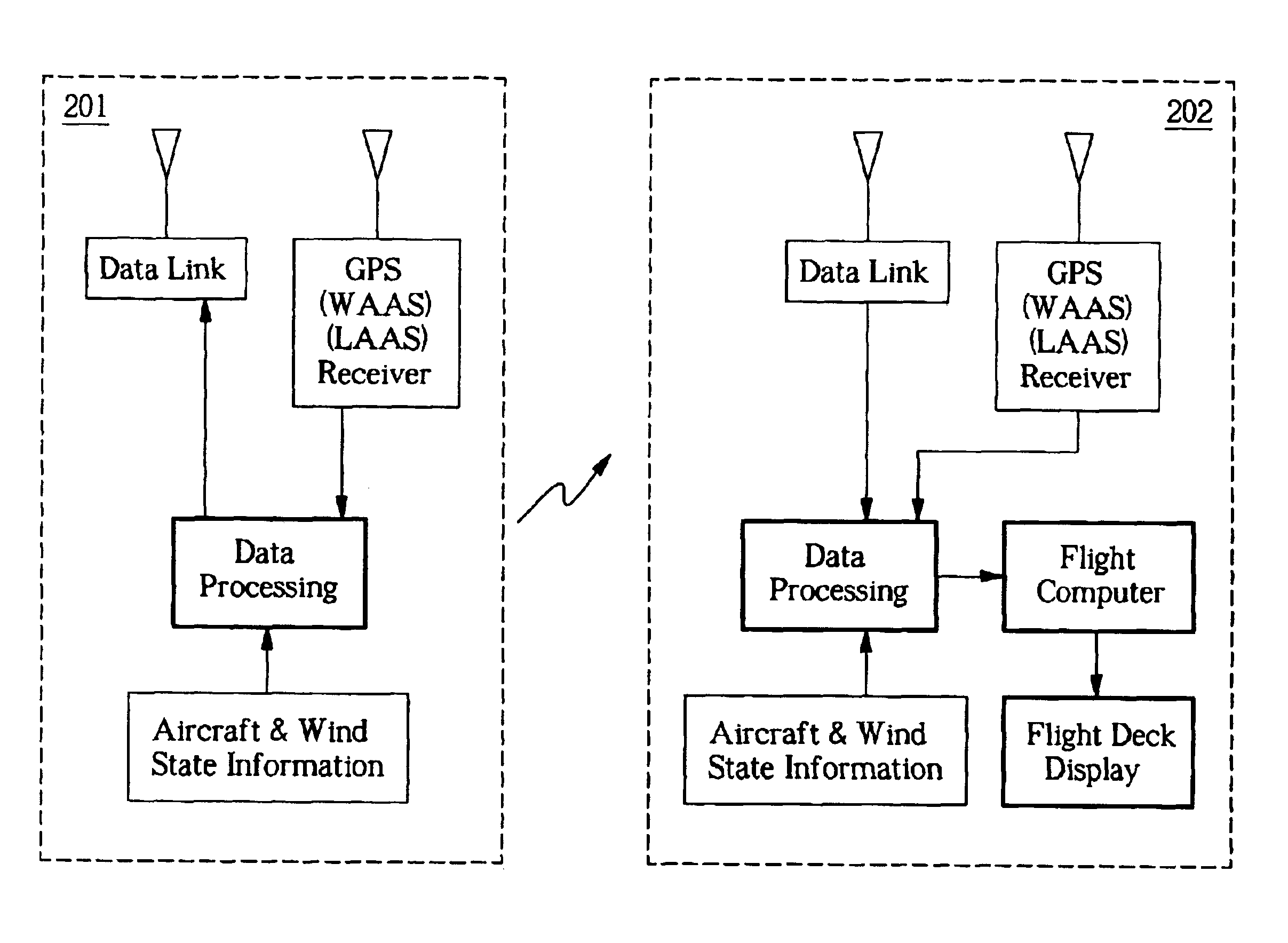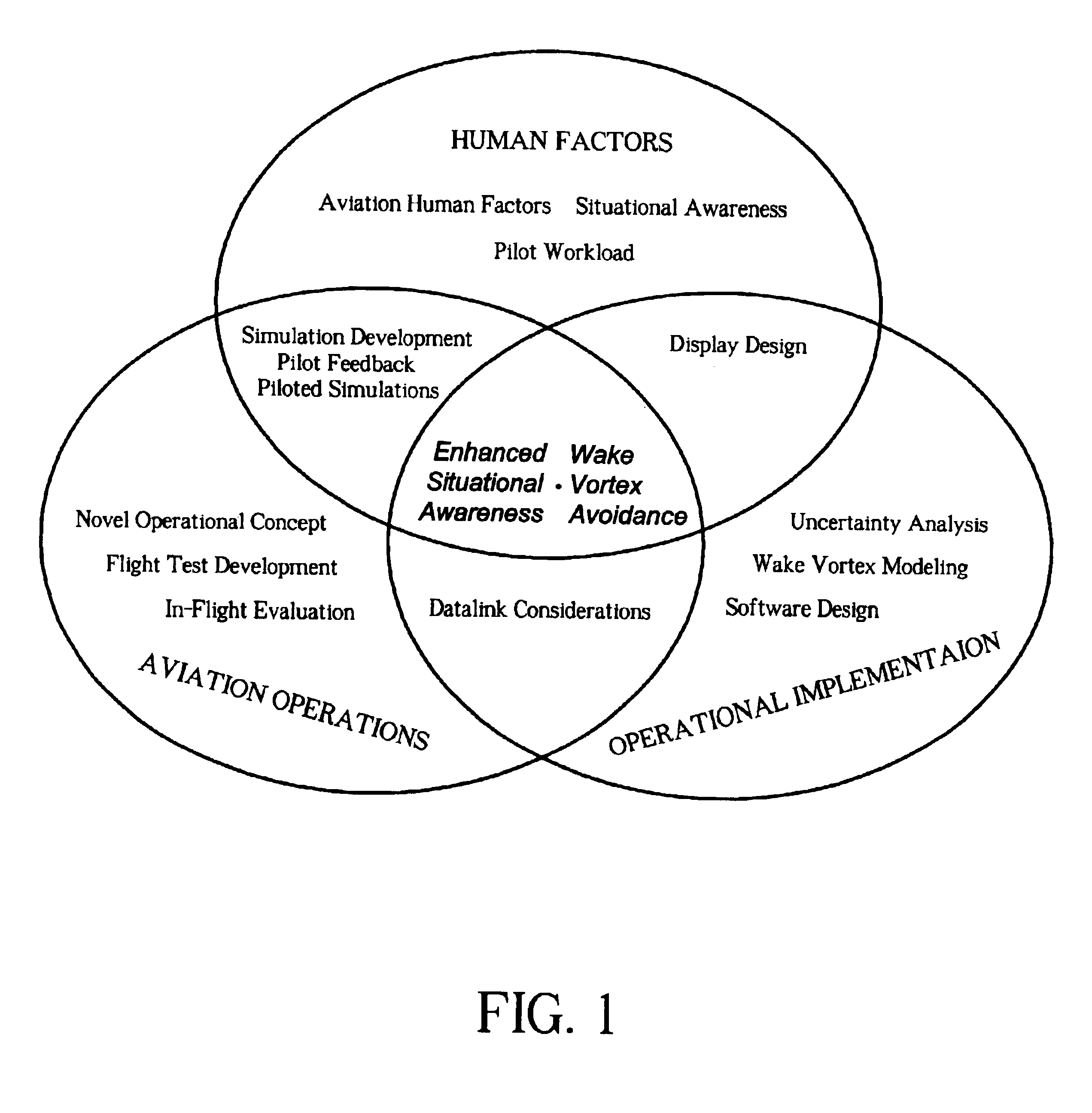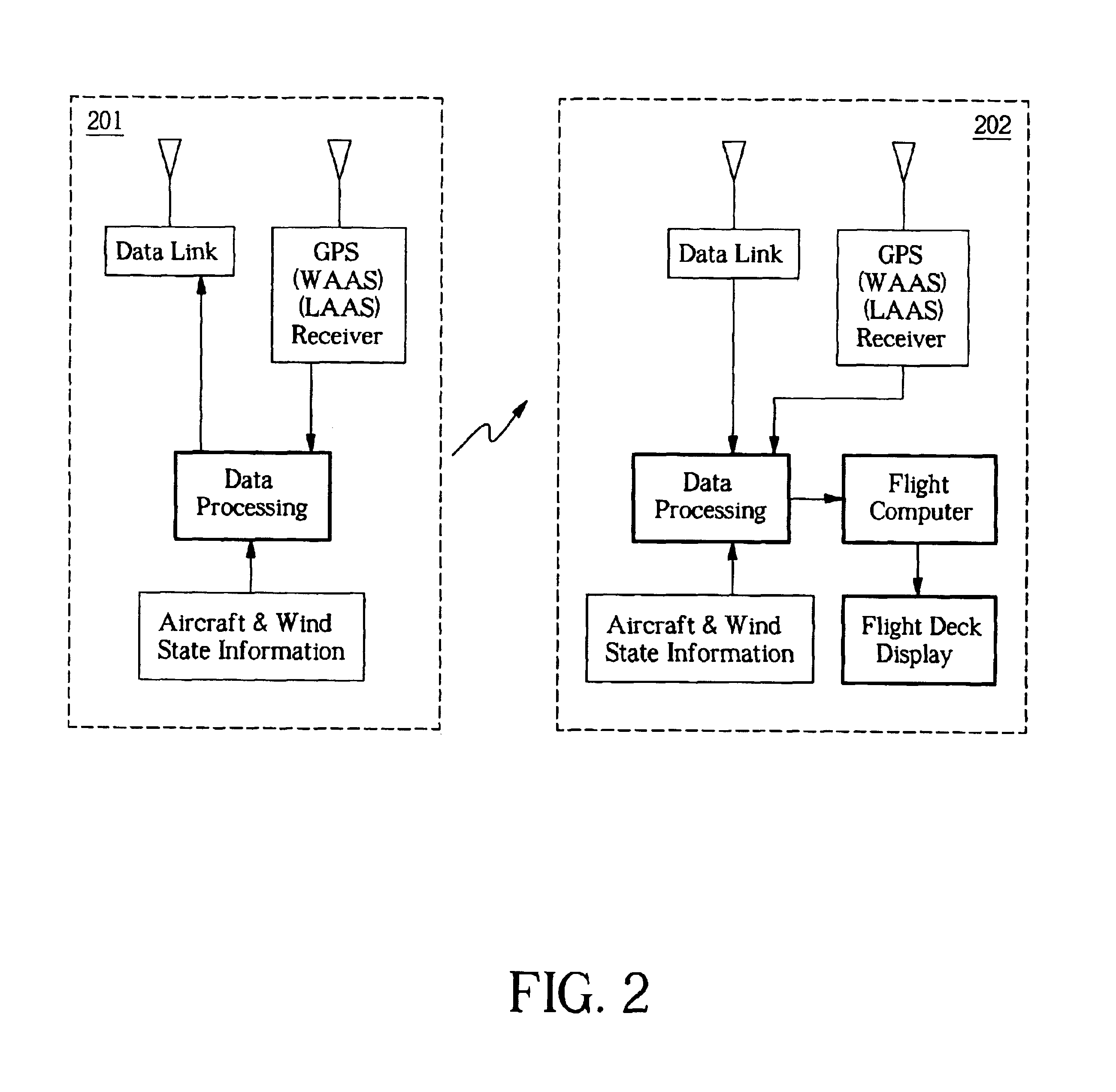Dynamic wake prediction and visualization with uncertainty analysis
a technology of uncertainty analysis and wake prediction, applied in the field of wake vortex avoidance, can solve problems such as adverse effects on airport capacity
- Summary
- Abstract
- Description
- Claims
- Application Information
AI Technical Summary
Benefits of technology
Problems solved by technology
Method used
Image
Examples
Embodiment Construction
Wake Turbulence and Current Separation Standards
[0048]Airborne wake turbulence is the turbulence that a wing creates in the process of producing lift, which is the result of the difference in air pressure between the upper and lower surface of the wing. A heavier airplane needs more lift, so a heavier airplane generates larger wake turbulence. Interest in the wake turbulence phenomenon increased substantially with the introduction of the larger so called wide-body turbojet aircraft in the late 1960s. Through flight tests, the FAA observed the following:[0049]1) The strength of the wake turbulence is governed by the weight, speed and wingspan of the generating aircraft.[0050]2) The greatest strength occurs when the generating aircraft is heavy, at slow speed with a clean wing configuration.[0051]3) The wake was observed to move down initially and then level off. It was never encountered at the same flight level as the generating aircraft nor more than 900 feet below the generating ai...
PUM
 Login to View More
Login to View More Abstract
Description
Claims
Application Information
 Login to View More
Login to View More - R&D
- Intellectual Property
- Life Sciences
- Materials
- Tech Scout
- Unparalleled Data Quality
- Higher Quality Content
- 60% Fewer Hallucinations
Browse by: Latest US Patents, China's latest patents, Technical Efficacy Thesaurus, Application Domain, Technology Topic, Popular Technical Reports.
© 2025 PatSnap. All rights reserved.Legal|Privacy policy|Modern Slavery Act Transparency Statement|Sitemap|About US| Contact US: help@patsnap.com



